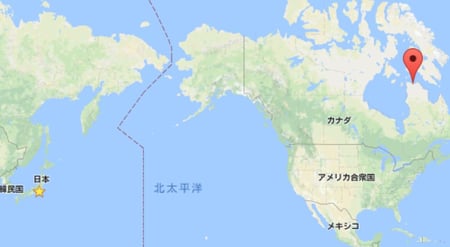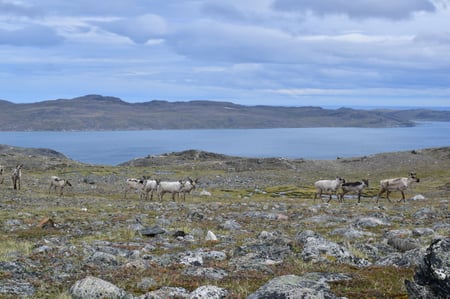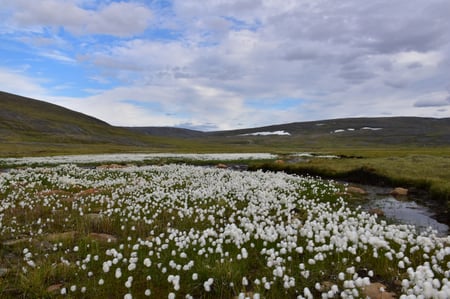As a part of ‘theme 6’ ecosystem and biodiversity research program, we conducted a survey of terrestrial biological diversity, from early July to late August 2017, in Salluit, Quebec, Canada. The purpose of this survey is to clarify diversities of plant and microorganism in the ecosystem of the Arctic tundra.
Salluit, located at 62 degrees north latitude (Fig. 1), has tundra ecosystem without trees. When we conducted our first outdoor survey, we were excited by the beautiful scenery and reindeers’ welcome (Photo 1). However, our research subjects are not animals such as reindeers or seals but plants and microorganisms. Although you may not be able to find so many livings in the tundra ecosystem at the first glance, if you look closer, you will realize many plant species growing on the ground (Photo 2). There are also microorganisms such as soil animals, fungi and bacteria. Plants and microorganisms have important roles in the ecosystem in that they are feed for land animals such as reindeers and lemmings which must survive in severe environment of the Arctic. And the growth of the plants is deeply depending on microbes activities in soil. We investigate diversities of plants and soil microorganisms as the foundation of such tundra ecosystem and clarify how the diversities contribute to the formation of tundra ecosystem.
Our field survey had many measurements, (1) some environmental conditions related to the growth of organisms such as soil moisture and acidity, (2) biological diversities as the number and composition of plants and microorganisms, and (3) ecosystem functions as biomass, soil respiration rate, and soil carbon and nitrogen content. Blessed with the weather, the survey proceeded smoothly, and we gathered these data through various field measurements and laboratory experiments. In the future, we will confirm the relationship between environment - biodiversity - ecosystem functionality by analyzing these data, and clarify how diversities and functionalities of plant and microbial play their roles for the tundra ecosystem.
Shota Masumoto
(Yokohama National University, A member of Theme 6)
<Reseaches in 2016>







